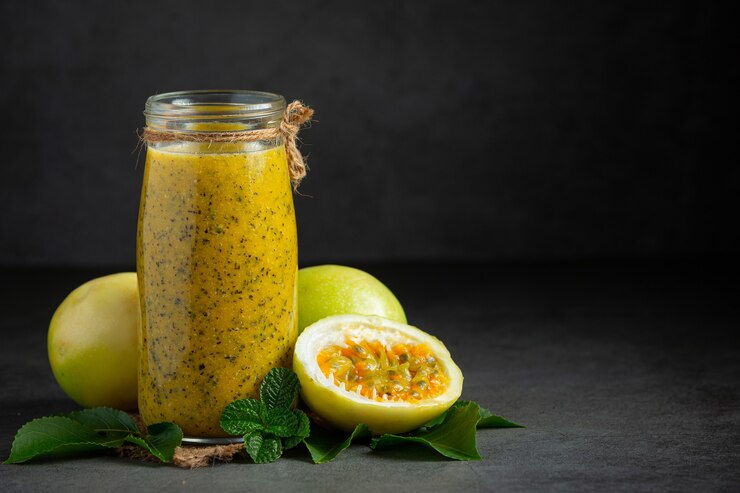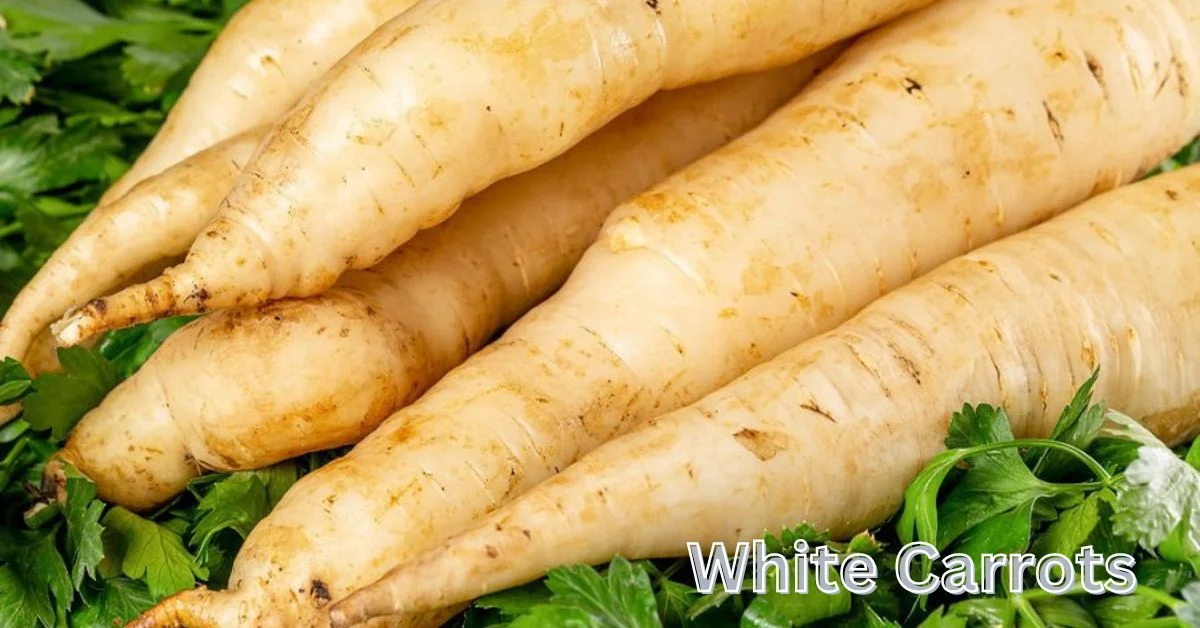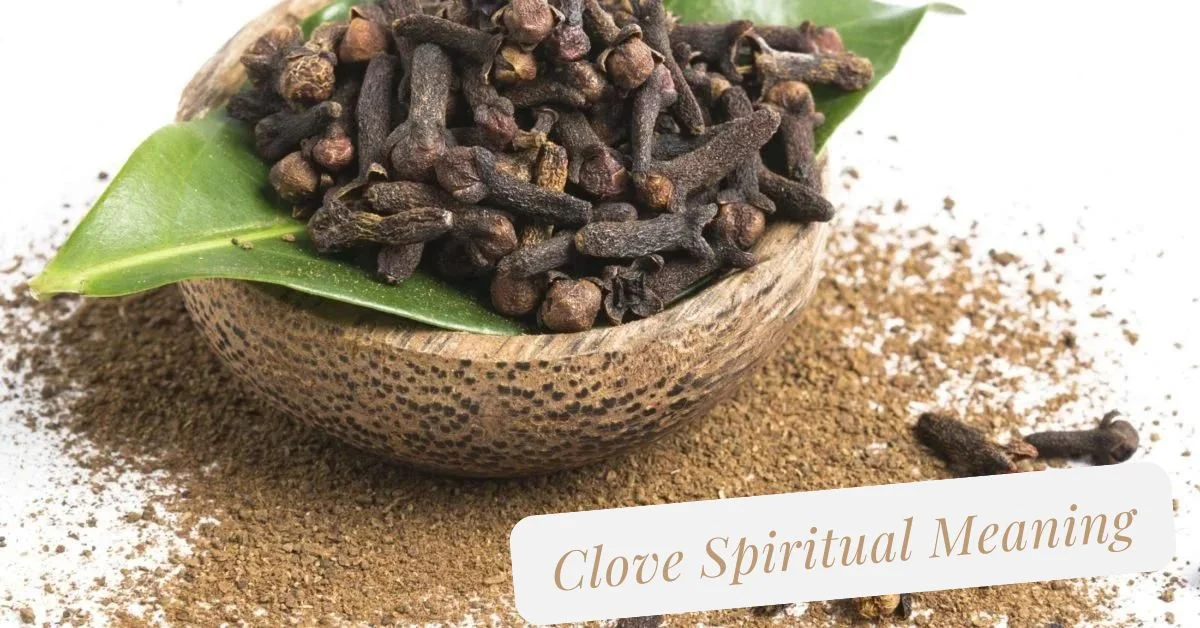Food & Drinks
The Health Benefits of Passion Fruit Juice: What You Need to Know

Are you ready to add a burst of tropical flavor and numerous health benefits to your daily routine? Look no further than passion fruit juice! This exotic drink is not only deliciously refreshing, but it also packs a punch when it comes to supporting your overall well-being. From its intriguing origins to the various methods for preparing and enjoying this delightful beverage, we’ve got all the information you need right here. So grab a glass, sit back, and let’s dive into the world of passion fruit juice together!
What is Passion Fruit Juice?
Passion fruit juice is a vibrant and tropical drink made from the pulp of the passion fruit. This exotic fruit is known for its distinctive flavor profile, combining sweet and tangy notes that tantalize the taste buds. The juice itself has a rich and slightly thick consistency, making it incredibly satisfying to sip on.
The passion fruit, also known as “maracuja” in some regions, is native to South America but can now be found growing in many parts of the world. It features a tough outer skin that houses an abundance of aromatic seeds surrounded by juicy pulp. When this pulp is extracted and turned into juice, it becomes a deliciously refreshing beverage that captures the essence of summer.
Whether you enjoy passion fruit juice on its own or use it as an ingredient in cocktails or smoothies, there’s no denying its unique flavor and versatility. So why not indulge your taste buds with this tropical treat? Let’s explore how to prepare passion fruit for juicing next!
Why is it Called Passion Fruit?
Passion fruit is a unique and exotic fruit that gets its name from the vibrant passionflower plant. But have you ever wondered why it’s called “passion” fruit? The answer lies in the intriguing folklore surrounding this tropical delight.
Legend has it that when Spanish missionaries discovered this luscious fruit in South America, they were struck by its extraordinary beauty. They believed that the flower of the passionfruit vine represented different aspects of the crucifixion of Christ, hence naming it “passion” fruit to symbolize his suffering and sacrifice on the cross.
Another theory suggests that the name comes from maracuyá, which means “food prepared in a gourd.” Over time, maracuyá evolved into several variations before becoming known as passionfruit. Regardless of its origins, there’s no denying that passion fruit is truly captivating both in taste and appearance.
The next time you enjoy a glass of refreshing passionfruit juice or indulge in a slice of tangy passionfruit pie, remember the fascinating story behind its intriguing name. Let yourself be transported to tropical landscapes where nature’s wonders never cease to amaze!
How to Prepare Passion Fruit for Juice
Passion fruit juice is not only delicious but also packed with a range of health benefits. But before you can enjoy this refreshing beverage, you need to know how to prepare the passion fruit for juicing.
First, start by selecting ripe and fragrant passion fruits. Look for ones that are slightly wrinkled on the outside as they indicate ripeness. Next, cut the fruit in half using a sharp knife. Scoop out the juicy pulp with a spoon and transfer it into a blender or a juicer.
Once all the passion fruit pulp is collected, blend or juice it until it becomes smooth and liquid-like in consistency. If desired, you can strain the mixture through a sieve to remove any seeds or fibrous bits.
Now that you know how to prepare passion fruit for juice, get ready to create your own delightful beverages filled with tropical flavors and numerous health benefits!
Methods to Make Passion Fruit Juice
Passion fruit juice is a refreshing and delicious beverage that can be enjoyed on its own or used as an ingredient in various recipes. If you’re wondering how to make passion fruit juice, there are several methods you can try.
One popular method is to cut the passion fruits in half and scoop out the pulp into a blender. Add some water and blend until smooth. Then, strain the mixture through a fine sieve to remove any seeds or pulp.
Another method involves using a juicer. Simply cut the passion fruits in half and press them down onto the juicer’s cone. The machine will extract the juice while leaving behind any seeds or pulp.
If you prefer a more natural approach, you can also make passion fruit juice by mashing the fruits with a fork or potato masher, then straining the mixture through cheesecloth or a nut milk bag to separate the liquid from any solids.
No matter which method you choose, homemade passion fruit juice is sure to be bursting with flavor and packed with nutrients!
Ingredients for Making Passion Fruit Juice
Passion fruit juice is a delicious and refreshing beverage that can be made right at home. To make this tangy and tropical drink, you’ll need just a few simple ingredients.
First up, you’ll obviously need some fresh passion fruits. These vibrant purple or yellow fruits are the star of the show and give the juice its distinct flavor. Make sure to choose ripe passion fruits that are slightly wrinkled as they will have the best taste.
Next, you’ll need some sweeteners like sugar or honey to balance out the tartness of the passion fruit. The amount of sweetener needed will depend on your personal preference and how sweet your passion fruits are.
Don’t forget about water! You’ll need water to dilute the intensity of the passion fruit flavor and create a more sippable consistency. Adjust the amount of water based on how strong or diluted you want your juice to be.
With these simple ingredients in hand, you’re ready to embark on your homemade passion fruit juice adventure! Get ready for a burst of tropical flavor with every sip!
Tips and Tricks for Making Passion Fruit Juice
Passion fruit juice is not only delicious but also packed with numerous health benefits. To make the most out of this refreshing beverage, here are some tips and tricks to help you create the perfect passion fruit juice at home.
First, choose ripe passion fruits for juicing. Look for fruits that have a wrinkled skin as it indicates ripeness. Next, cut the passion fruits in half and scoop out the pulpy seeds using a spoon. You can strain the seeds if you prefer a smoother texture or leave them in for added crunchiness.
When it comes to extracting the juice, there are various methods you can try. One popular method is blending the pulp with water and then straining it through a fine-mesh sieve to remove any solids. Alternatively, you can use a juicer machine specifically designed for extracting juices from fruits like passion fruit.
Experimenting with different ingredients can elevate your passion fruit juice to another level of flavor complexity. Consider adding other tropical fruits like pineapple or mango to enhance its taste profile. Additionally, sweetening agents such as honey or agave syrup can be used if desired.
Remember these tips and tricks when making your own passion fruit juice at home! With just a few simple steps and creative additions, you’ll be able to enjoy this nutritious beverage bursting with tropical goodness.
How Long Does Passion Fruit Juice Last?
Passion fruit juice is a delicious and refreshing beverage that many people enjoy. But how long does it last once you’ve made it? The answer depends on a few factors.
If you’re making passion fruit juice from fresh fruit, it’s best to consume it within 2-3 days. This is because the natural enzymes in the juice can cause it to spoil relatively quickly. If you want to extend its shelf life, consider freezing the juice in ice cube trays or small containers for later use.
If you’re buying store-bought passion fruit juice, check the expiration date on the packaging. Typically, these juices have preservatives added to prolong their shelf life. However, once opened, they should be consumed within a week or so to ensure freshness.
Remember to always store your passion fruit juice properly. Keep it refrigerated at all times and make sure the container is tightly sealed. Exposure to air can speed up oxidation and affect taste and quality.
So there you have it – while passion fruit juice doesn’t last as long as some other beverages, with proper storage and consumption practices, you can still enjoy its flavors for several days!
Storage Suggestions for Passion Fruit Juice
When it comes to storing your passion fruit juice, proper storage is key to maintaining its freshness and flavor. Here are some suggestions to ensure that you can enjoy the goodness of your homemade passion fruit juice for as long as possible.
It is recommended to store your passion fruit juice in airtight containers or glass bottles with tight-fitting lids. This will help prevent any air from entering and oxidizing the juice, which could affect its taste and quality.
Keep your passion fruit juice refrigerated at all times. The cool temperature will slow down the growth of bacteria and help preserve the nutrients in the juice. Ideally, store it in the refrigerator’s main compartment rather than on the door where temperatures may fluctuate more.
Label your containers with the date of preparation to keep track of how long your passion fruit juice has been stored. Generally, fresh homemade juices should be consumed within 3-5 days for maximum freshness and flavor.
Remember these storage suggestions so that you can savor every sip of your delicious passion fruit juice even after a few days!
The Health Benefits of Passion Fruit Juic’e
Passion fruit juice not only tastes delicious but also offers a wide range of health benefits. Packed with essential vitamins and minerals, this tropical fruit can boost your overall well-being in many ways.
Passion fruit juice is a rich source of vitamin C, which plays a crucial role in strengthening the immune system and fighting off infections. It also contains antioxidants that help protect your body against free radicals and reduce the risk of chronic diseases.
Additionally, this refreshing juice is known to promote good digestion due to its high fiber content. It aids in preventing constipation and promoting regular bowel movements. Furthermore, passion fruit juice contains natural compounds that may have anti-inflammatory properties, potentially benefiting those with inflammatory conditions such as arthritis.
Adding passion fruit juic’e to your diet can be an excellent choice for enhancing your health and vitality. So why not indulge in this tropical delight while reaping all its amazing benefits?
Other Passion Fruit Recipes You’ll Love
Passion fruit is not only delicious on its own, but it can also be used to create a variety of mouthwatering recipes that you’ll absolutely love. Here are some other passion fruit recipes that will add a burst of tropical flavor to your meals.
1. Passion Fruit Smoothie:Blend together fresh passion fruit juic’e, yogurt, honey, and ice for a refreshing and nutritious drink. You can even add in some banana or pineapple for extra sweetness and creaminess.
2. Passion Fruit Salad Dressing: Mix passion fruit juic’e with olive oil, vinegar, honey, dijon mustard, salt, and pepper to create a tangy dressing that pairs perfectly with mixed greens or grilled vegetables.
3. Passion Fruit Sorbet: Combine passion fruit puree with sugar syrup and freeze it until firm for a delightful frozen treat. Serve it alone or as an accompaniment to desserts like cake or pie.
With these tantalizing recipes, you can explore the versatility of passion fruit and enjoy its unique flavor in different ways! Experiment in the kitchen and discover new favorites that will satisfy your taste buds all year round!
Where to Buy Passion Fruit
Looking to get your hands on some fresh passion fruit for that delicious juice you’ve been craving? Luckily, there are several options available when it comes to finding this tropical fruit.
One of the easiest ways to buy passion fruit is at your local grocery store or supermarket. Many larger chains carry a variety of fruits, including passion fruit, in their produce section. Take a stroll down the aisle and look for the vibrant purple or yellow-skinned fruits.
If you prefer a more personalized shopping experience, consider visiting a farmer’s market in your area. These markets often feature locally grown produce and may have vendors selling fresh passion fruit. Not only will you be supporting local farmers, but you’ll also have the opportunity to chat with them about their growing methods and any other questions you may have.
For those who prefer online shopping, there are numerous websites that offer delivery services for exotic fruits like passion fruit. With just a few clicks, you can have ripe and ready-to-enjoy Passion fruit juic’e offers tropical flavor and health benefits, providing refreshing and promoting overall well-being. Discover its origins and preparation methods. delivered right to your doorstep.
No matter where you choose to purchase your passion fruit from, be sure to select ones that are plump and slightly wrinkled – these indicate ripeness! Now that you know where to find this delightful tropical treat, it’s time to start enjoying all its amazing health benefits!
Reader Interactions
We hope you found this article on the health benefits of passion fruit juice informative and insightful. Now, we want to hear from you! Have you tried making passion fruit juic’e before? Do you have any tips or tricks that we didn’t mention? Share your thoughts and experiences in the comments below.
If you have any questions or need further information about passion fruit juic’e, feel free to reach out. We’re here to help!
Remember, incorporating passion fruit juic’e into your diet can offer a multitude of health benefits. From boosting immunity and improving digestion to promoting heart health and reducing inflammation, this tropical delight is truly a nutritional powerhouse.
So go ahead, grab some fresh passion fruits from your local market or order them online, and start enjoying all the goodness that passion fruit juic’e has to offer. Cheers to good health!
Food & Drinks
White Carrots: A Comprehensive Guide to Health Benefits and Uses

Introduction
White carrots might not be as common as their orange counterparts, but they offer a unique twist on a classic vegetable. From their distinct appearance to their numerous health benefits, white carrots are worth a closer look. In this comprehensive guide, we’ll dive into what makes white carrots special, their health benefits, and how you can incorporate them into your diet.
What Are White Carrots?
Origins and History
White carrots have a long history that dates back to ancient times. Unlike the more common orange carrots, which were developed in the 17th century in the Netherlands, white carrots have been grown for centuries in various parts of the world. Their pale color is due to a lack of pigments, specifically carotenoids.
Nutritional Profile
White carrots have a different nutritional profile compared to their orange counterparts. They are low in calories and rich in essential vitamins and minerals. While they might not have the same level of beta-carotene, they are still packed with nutrients that are beneficial for your health.
Health Benefits of White Carrots
Rich in Antioxidants
White carrots contain a range of antioxidants that help combat oxidative stress in the body. These antioxidants play a crucial role in reducing inflammation and protecting cells from damage.
Supports Digestive Health
The fiber content in white carrots aids in digestion and promotes a healthy gut. Fiber helps regulate bowel movements and can prevent constipation, making white carrots a great addition to a balanced diet.
Boosts Immune System
White carrots are a good source of vitamin C, which is essential for a strong immune system. Vitamin C helps the body fight off infections and supports overall health.
Promotes Healthy Skin
The nutrients found in white carrots, including vitamin C and various antioxidants, contribute to healthy skin. They help fight signs of aging and maintain a youthful appearance.
Enhances Eye Health
While white carrots lack beta-carotene, they still provide other nutrients that support eye health. Vitamin A and other antioxidants help maintain good vision and prevent eye-related issues.
How to Incorporate White Carrots into Your Diet
Raw or Cooked
White carrots can be enjoyed both raw and cooked. Eating them raw as a crunchy snack is a great way to get their full nutritional benefits. Cooking them can enhance their flavor and make them a versatile ingredient in various dishes.
In Salads
Add sliced white carr’ots to salads for a fresh and crunchy texture. They pair well with other vegetables and can add a unique flavor to your salad creations.
In Soups and Stews
White carr’ots can be used in soups and stews to add depth of flavor. Their mild taste complements other ingredients and provides a subtle sweetness to your dishes.
In Smoothies
For a healthy twist on your smoothie, try adding white carr’ots . They blend well with fruits and other vegetables, giving your smoothie a nutrient boost without overpowering the flavor.
Recipes Featuring White Carrots
White Carrot and Ginger Soup
A soothing and nutritious soup made with white carr’ots and fresh ginger. This recipe is perfect for a light lunch or a comforting dinner.
White Carrot Slaw
A crunchy and refreshing slaw made with shredded white carr’ots , cabbage, and a tangy vinaigrette. This dish makes an excellent side for any meal.
Roasted White Carrots
Roasted white carr’ots with a sprinkle of herbs and spices create a delicious and simple side dish. The roasting process brings out their natural sweetness and enhances their flavor.
Buying and Storing White Carrots
How to Choose White carr’ots
When selecting white carr’ots , look for firm and smooth ones without cracks or blemishes. Fresh carr’ots should be crisp and have a bright whi’te color.
Storage Tips
Store white carr’ots in the refrigerator to keep them fresh. They should be kept in a crisper drawer or an airtight container to prevent them from drying out.
Potential Side Effects and Considerations
While white carr’ots are generally safe for most people, it’s important to be aware of any potential allergies or intolerances. If you have any concerns, consult with a healthcare professional before making significant changes to your diet.
Conclusion
White carr’ots are a versatile and nutritious vegetable that can enhance your diet in various ways. From their unique flavor to their health benefits, they offer a refreshing alternative to more common carrot varieties. By incorporating white carr’ots into your meals, you can enjoy their many advantages while adding a touch of variety to your diet.
FAQs
Are white carr’ots as nutritious as orange carr’ots ?
White carr’ots have a different nutritional profile but are still nutritious. They may lack beta-carotene, but they provide other vitamins and antioxidants beneficial for health.
Can I use white carr’ots in place of orange carr’ots in recipes?
Yes, white carr’ots can be used in most recipes that call for orange carr’ots . They have a similar texture and can be a great substitute.
How can I tell if white carr’ots are fresh?
Fresh white carr’ots should be firm, smooth, and free from cracks or blemishes. They should also have a crisp texture.
Do white carr’ots have a different taste than orange carr’ots ?
White carr’ots have a milder and slightly sweeter flavor compared to orange carr’ots . Their taste is subtle, which can complement a variety of dishes.
Can I grow white carr’ots at home?
Yes, white carr’ots can be grown at home in a garden or container. They require similar growing conditions to orange carrots, including well-drained soil and plenty of sunlight.
Food & Drinks
Kefli: The Ultimate Guide to Hungarian Christmas Cookies

Introduction
Kefli, also known as kifli, is a classic Hungarian Christmas cookie that adds a touch of tradition and delight to holiday celebrations. These crescent-shaped treats, filled with sweet and nutty goodness, are a beloved staple in Hungarian homes. In this ultimate guide, we’ll explore everything you need to know about kefli—its history, ingredients, recipe, and tips for perfecting this festive favorite.
The History of Kefli
Kefli has a rich history deeply rooted in Hungarian culinary traditions. This iconic cookie, which translates to “crescent” in Hungarian, has been a favorite during Christmas and other festive occasions for generations. Originally, kefli was made by hand in Hungarian kitchens, symbolizing the joy of sharing homemade treats with family and friends.
The tradition of baking kefli reflects a blend of influences from surrounding cultures, incorporating local ingredients and techniques. Over time, kefli has become a cherished part of Hungarian holiday celebrations, embodying warmth and togetherness.
Essential Ingredients for Kefli
Dough Ingredients
- All-Purpose Flour (2 ½ cups): The base of the dough, providing structure and texture.
- Unsalted Butter (1 cup): Adds richness and a flaky texture to the dough.
- Sour Cream (½ cup): Contributes to the dough’s tender consistency.
- Granulated Sugar (¼ cup): Lightly sweetens the dough.
Filling Ingredients
- Ground Walnuts (1 cup): The traditional filling, offering a nutty flavor.
- Granulated Sugar (½ cup): Sweetens the walnut mixture.
- Vanilla Extract (1 tsp): Enhances the overall flavor.
- Powdered Sugar: For dusting the baked cookies.
These ingredients combine to create a rich and flavorful cookie that’s perfect for holiday gatherings.
Step-by-Step Kefli Recipe
Preparing the Dough
- Mix the Dough: In a large bowl, combine flour and sugar. Cut in the butter using a pastry cutter or your fingers until the mixture resembles coarse crumbs. Stir in the sour cream until a soft dough forms.
- Chill the Dough: Wrap the dough in plastic wrap and refrigerate for at least 1 hour. Chilling makes the dough easier to handle and helps achieve a flakier texture.
Preparing the Filling
- Combine Ingredients: In a small bowl, mix ground walnuts, sugar, and vanilla extract until well combined. Set aside.
Shaping and Baking
- Roll Out the Dough: On a floured surface, roll out the dough to about ¼ inch thickness. Cut into 3-inch squares.
- Add Filling: Place a teaspoon of the walnut mixture in the center of each square. Fold the dough over to form a triangle, then roll into a crescent shape.
- Bake: Place the cookies on a parchment-lined baking sheet. Bake in a preheated oven at 350°F (175°C) for 15-20 minutes, or until golden brown.
- Cool and Dust: Allow the cookies to cool on a wire rack before dusting with powdered sugar.
Tips for Perfecting Your Kefli
- Use Cold Ingredients: Ensure your butter and sour cream are cold to achieve a flaky texture.
- Avoid Overworking the Dough: Mix just until combined to keep the cookies tender.
- Chill the Dough: This step helps with handling and shaping the dough.
- Monitor Baking Time: Ovens vary, so check the cookies during the last few minutes to avoid overbaking.
- Store Properly: Keep baked kefli in an airtight container at room temperature for up to one week, or freeze for longer storage.
Variations and Serving Suggestions
Kefli can be adapted to suit different tastes:
- Fruit Fillings: Replace the walnut filling with fruit preserves for a fruity twist.
- Chocolate Kefli: Add chocolate chips or cocoa powder to the filling for a rich, chocolatey treat.
- Spiced Kefli: Incorporate cinnamon or nutmeg into the filling for added warmth.
Serve kefli alongside coffee or tea for a delightful treat. They also make excellent gifts when packaged in a festive tin.
FAQs
What is kefli?
Kefli is a traditional Hungarian cookie shaped like a crescent, typically filled with ground walnuts or fruit preserves. It’s especially popular during Christmas and other holiday celebrations.
Can kefli be made ahead of time?
Yes, kefli can be baked ahead of time. Store the cookies in an airtight container at room temperature for up to one week, or freeze for up to three months.
How do you pronounce “kefli”?
“Kefli” is pronounced “KEF-lee.” The name refers to the cookie’s crescent shape.
What can I use as a filling for kifli?
Traditional fillings include ground walnuts, fruit preserves, or sweetened poppy seeds. You can also experiment with chocolate or other flavors.
How do I know when kifli is done baking?
Kifli is done when the edges are golden brown. Keep an eye on them during the last few minutes of baking to prevent overbaking.
Food & Drinks
Clove Spiritual Meaning: Protection Rituals, Love Spells, and More

Introduction
What Are Cloves?
Cloves are the dried flower buds of the Syzygium aromaticum tree, which is native to the Maluku Islands in Indonesia. While these small, aromatic buds are celebrated for their rich flavor and medicinal properties in cooking, they also hold deep “Clove Spiritual Meaning.” Their significance extends beyond the kitchen, as cloves have been revered for their spiritual and cultural roles for centuries.
Historical Significance of Cloves
Throughout history, cloves have been highly prized, often serving as a key player in the global spice trade. Their value was so immense that they were traded across continents, from Asia to Europe, and were sometimes used as a form of currency. This historical importance reflects not only their economic value but also their connection to various spiritual and medicinal practices, highlighting their profound “Clove Spiritual Meaning” across different cultures.
Spiritual Meaning of Cloves
Symbolism of Cloves
In the realm of spirituality, cloves symbolize protection, purification, and love. Their strong, spicy aroma is believed to drive away negative energies and attract positive vibrations. This powerful symbolism makes cloves a popular choice in various rituals and practices aimed at enhancing spiritual well-being.
Cloves in Ancient Traditions
Ancient civilizations, including the Greeks and Romans, utilized cloves for their aromatic and medicinal properties. They were often used in rituals to ward off evil spirits and to purify spaces. In Chinese medicine, cloves were employed to balance the body’s energy and to treat various ailments, showcasing their versatility in spiritual and physical health.
Modern Spiritual Practices with Cloves
In contemporary spiritual practices, cloves are commonly used in protection rituals and love spells. Their ability to repel negativity while attracting positive energy makes them a favored choice for those seeking to enhance their spiritual and emotional lives. Cloves are often used in incense, sachets, and as part of meditation practices to create a serene and protective environment.
Protection Rituals with Cloves
How Cloves Protect Against Negative Energies
Cloves are renowned for their protective qualities. The spicy aroma of cloves is believed to shield individuals and spaces from negative energies and malevolent forces. By incorporating cloves into rituals, practitioners aim to create a barrier against unwanted influences, fostering a sense of safety and security.
Simple Protection Rituals Using Cloves
One easy way to harness the protective power of cloves is by creating a clove-infused protection sachet. Simply fill a small bag with cloves and carry it with you or place it in your home. You can also burn clove incense during meditation or prayer to cleanse your space of negativity. These simple practices can help establish a protective aura around you and your environment.
Enhancing Home Protection with Cloves
To protect your home from negative energies, you can use cloves in various ways. Create a clove-based room spray by mixing clove essential oil with water and a few drops of other protective essential oils, such as sage or lavender. Spritz this mixture around your home to cleanse and purify the space. Additionally, placing bowls of whole cloves in different rooms can help maintain a protective atmosphere.
Love Spells and Cloves
The Role of Cloves in Love Spells
Cloves are also used in love spells due to their association with attraction and emotional balance. The warm, spicy energy of cloves is believed to enhance romantic connections and deepen emotional bonds. By incorporating cloves into love rituals, practitioners aim to manifest love and strengthen relationships.
Crafting Love Spells with Cloves
To craft a simple love spell using cloves, you can create a love charm by placing cloves, rose petals, and a piece of rose quartz into a small pouch. Carry this pouch with you or place it under your pillow to attract love and enhance your romantic life. Another method involves using clove essential oil in a love ritual bath, which can help open your heart to new possibilities and strengthen existing relationships.
Real-Life Success Stories and Testimonials
Many individuals have reported positive results from using cloves in their love spells. From finding new romantic partners to deepening existing relationships, cloves have played a role in various personal success stories. Testimonials often highlight how the subtle yet potent energy of cloves has made a significant impact on their emotional and romantic lives.
Chakra Alignment and Cloves
Cloves and Their Effect on Chakras
Cloves are believed to have a balancing effect on the body’s energy centers, or chakras. The stimulating and warming properties of cloves can help align and activate the chakras, promoting overall well-being and spiritual balance. Each chakra can benefit from the unique energy of cloves in different ways.
Using Cloves for Chakra Meditation
To use cloves for chakra meditation, place a few cloves near your meditation space or in a bowl beside you. As you meditate, focus on the clove’s energy and visualize it aligning your chakras. You can also create a clove-infused essential oil blend to apply to your chakras during meditation, enhancing the experience and promoting deeper alignment.
Recipes and Rituals for Chakra Alignment
One popular recipe for chakra alignment involves making a clove-infused oil. Combine clove essential oil with a carrier oil, such as jojoba or almond oil, and apply it to your chakras while meditating. Another ritual includes creating a clove-based crystal grid, where you place cloves around your favorite crystals to amplify their energy and support chakra balancing.
Cloves in Different Cultures
Cloves in Eastern Spirituality
In Eastern cultures, cloves have long been associated with spiritual practices and rituals. In Hinduism and Buddhism, cloves are often used in offerings and ceremonies to promote purity and ward off negative energies. Their strong, protective qualities are valued in various spiritual traditions across Asia.
Western Beliefs and Practices with Cloves
In Western spirituality, cloves are commonly used in magical and folk practices. Their role in protection rituals and love spells reflects a blend of historical beliefs and modern interpretations. Western practitioners often use cloves in spellwork and rituals to harness their protective and attracting energies.
Comparative Analysis of Cultural Beliefs
A comparative analysis of cultural beliefs about cloves reveals common themes of protection and attraction. While specific practices and rituals may vary, the underlying symbolism of cloves as a powerful tool for enhancing spiritual and emotional well-being remains consistent across cultures.
Practical Uses of Cloves Beyond Spirituality
Culinary Uses of Cloves
Beyond their spiritual significance, cloves are widely used in cooking. Their distinctive flavor enhances a variety of dishes, from savory stews to sweet desserts. Cloves are a staple in many spice blends and are valued for their ability to add depth and warmth to culinary creations.
Medicinal Benefits of Cloves
Cloves also offer several medicinal benefits. They are known for their anti-inflammatory, antimicrobial, and analgesic properties. Clove oil is commonly used to relieve toothaches, improve digestion, and support overall health. Their versatility extends from the kitchen to the medicine cabinet.
Cloves in Aromatherapy
In aromatherapy, cloves are used to promote relaxation and mental clarity. Clove essential oil is often incorporated into blends for its warming and uplifting effects. It can be used in diffusers, massage oils, and bath products to enhance mood and support emotional well-being.
Conclusion
FAQs
What is the spiritual significance of cloves?
The “Clove Spiritual Meaning” is rooted in their powerful protective and purifying properties. Cloves are believed to shield against negative energies, boost love and attraction, and aid in chakra alignment, making them a valuable tool in various spiritual practices.
How can I use cloves for protection rituals?
You can use cloves for protection by creating sachets, burning clove incense, or making room sprays. Place cloves in strategic areas to maintain a protective and positive atmosphere.
Can cloves enhance my love spells?
Yes, cloves are used in love spells to attract and deepen romantic connections. Craft love charms or infuse love rituals with cloves to amplify their effects.
How do cloves affect my chakras?
Cloves can help balance and align your chakras through their warming and stimulating properties. Use clove-infused oils or incorporate cloves into your meditation practice to support chakra health.
Are there other uses for cloves beyond spirituality?
Cloves are also used in cooking for their flavor, in medicine for their health benefits, and in aromatherapy for relaxation and mood enhancement. Their versatility extends beyond spiritual practices.
-

 Fashion2 years ago
Fashion2 years agoExploring Purenudism: Embracing Body Positivity and Freedom
-

 Shops1 year ago
Shops1 year agoStaples Store Hours: What Time Does Staples Open And Close?
-

 Shops1 year ago
Shops1 year agoWalgreen Pharmacy Hours: What Time Does It Open & Close?
-

 Shops2 years ago
Shops2 years agoWalmart Vision Center Hours
-

 Shops1 year ago
Shops1 year agoPublix Pharmacy Hours and Locations
-

 Business2 years ago
Business2 years agoDesigner Clothing: Making a Statement
-

 Entertainment2 years ago
Entertainment2 years agoThothub.lol: The Digital Realm of Entertainment
-

 Shops1 year ago
Shops1 year agoWalmart Deli Open & Close Hours
